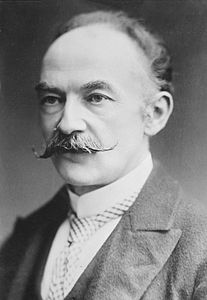Analysis of She At His Funeral
Thomas Hardy 1840 (Stinsford) – 1928 (Dorchester, Dorset)
THEY bear him to his resting-place--
In slow procession sweeping by;
I follow at a stranger's space;
His kindred they, his sweetheart I.
Unchanged my gown of garish dye,
Though sable-sad is their attire;
But they stand round with griefless eye,
Whilst my regret consumes like fire!
| Scheme | ABABBCBC |
|---|---|
| Poetic Form | |
| Metre | 11111101 01010101 11010101 1101111 01111101 110111010 1111111 110101110 |
| Closest metre | Iambic tetrameter |
| Characters | 325 |
| Words | 49 |
| Sentences | 3 |
| Stanzas | 1 |
| Stanza Lengths | 8 |
| Lines Amount | 8 |
| Letters per line (avg) | 28 |
| Words per line (avg) | 6 |
| Letters per stanza (avg) | 222 |
| Words per stanza (avg) | 47 |
Font size:
Submitted on May 13, 2011
Modified on March 21, 2023
- 15 sec read
- 109 Views
Citation
Use the citation below to add this poem analysis to your bibliography:
Style:MLAChicagoAPA
"She At His Funeral" Poetry.com. STANDS4 LLC, 2024. Web. 29 Apr. 2024. <https://www.poetry.com/poem-analysis/36459/she-at-his-funeral>.


Discuss this Thomas Hardy poem analysis with the community:
Report Comment
We're doing our best to make sure our content is useful, accurate and safe.
If by any chance you spot an inappropriate comment while navigating through our website please use this form to let us know, and we'll take care of it shortly.
Attachment
You need to be logged in to favorite.
Log In